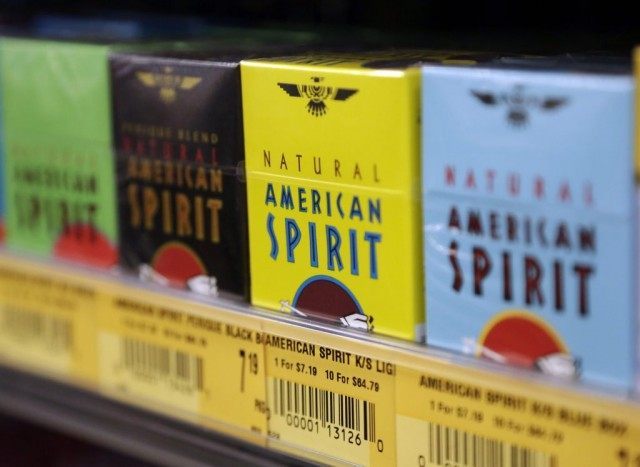With liberal billionaire Tom Steyer’s “Save Lives Coalition” gathering more than the 585,407 signatures required to put a $2-per-pack cigarette tax on the November ballot, California is poised to become the smuggling capital of America.
By contributing $74 million to Democrats in the 2014 mid-term elections, San Francisco’s Steyer became the largest individual political contributor in the United States, according to Politico. Despite the Republican triumph in 2014, gaining of control of 31 governorships and nearly 70 percent of the legislative chambers around the nation, Steyer said he would “open his wallet even wider” in 2016.
Through the April 2016 reporting period, Steyer had donated $13,044,744 in cash to Democrats, and was runner-up as America’s largest individual donor, according to the non-partisan Open Secrets blog. Steyer had also announced plans to spend $25 million to turn out youth voters in November’s election.
Breitbart News reported on May 14 that Steyer was again stepping up his commitments by forming a $50 million partnership with the American Federation of State, County and Municipal Employees, the American Federation of Teachers, and the National Education Association and the AFL-CIO to form the “For Our Future PAC” to elect a Democrat President and to build a “permanent liberal spending infrastructure.”
Steyer knows that since most California voters are not smokers, they will likely pass tobacco tax increases. By serving as co-chair of the tobacco initiative, and providing a million dollars to pay for gathering signatures, Steyer can create a $1.5 billion annual revenue stream that can be designated to expand Medi-Cal.
California currently has $0.87 in taxes per pack of cigarettes; including $0.50 for “Children and Families”; $.25 for ‘:obacco Use Prevention and Wildlife’, $.10 for a ‘General Fund’, and $.02 ‘Breast Cancer.’ The tax spending from these “programs,” even in supposedly conservative communities like the County of Orange, has very little very do with reducing smoking and usually amounts to a permanent liberal spending slush fund.
But spending capacity has fallen dramatically, due to withering tax collections. As an example, the “Children and Families” Proposition 10 tobacco tax brought in $650 million when it was passed in 1998, but collections are down to $350 million.
Tax advocates would like to credit the tax implosion to a major decline in U.S. smoking, from 35 percent in 1975 to 17 percent. But that statistic does not explain why studies show youth smoking actually increased by 12 percent from 1991 to 2009.
The real culprit for falling tax revenue is rising cigarette smuggling across America to avoid paying usurious taxes.
New York State imposes a $4.35-per-pack excise tax on cigarettes and New York City adds a local $1.50 local tax. As a result, cigarettes can be purchased legally for about $13, with stores making a $.50-per-pack profit.
But virtually every “bodega” corner store in Brooklynf pays $5.50 a pack in cash to buy “smuggled” cigarettes from someone who travelled down to Virginia, North Carolina or Delaware and bought “smokes” for $4.80 a pact. The shopkeeper then sells cigarettes for about $8.50 a pack and makes a $3 profit.
The New York Sherriff’s Department estimates that 60 percent of all cigarettes sold in New York City are smuggled, costing the city and the State of New York about $1.5 billion in tax revenue.
It is estimated that over 18.6 percent of cigarettes in California are sold without paying state taxes. In neighboring Arizona, where there is a $2-per-pald a pack tax, the non-partisan Tax Foundation estimated that 51.5 percent of cigarettes consumed were smuggled in 2012.
Given California’s size, and the known efficiency of its drug gangs, Tom Steyer’s proposed $2-per-pac tax increase seems poised to launch a huge cigarette smuggling boom.

COMMENTS
Please let us know if you're having issues with commenting.